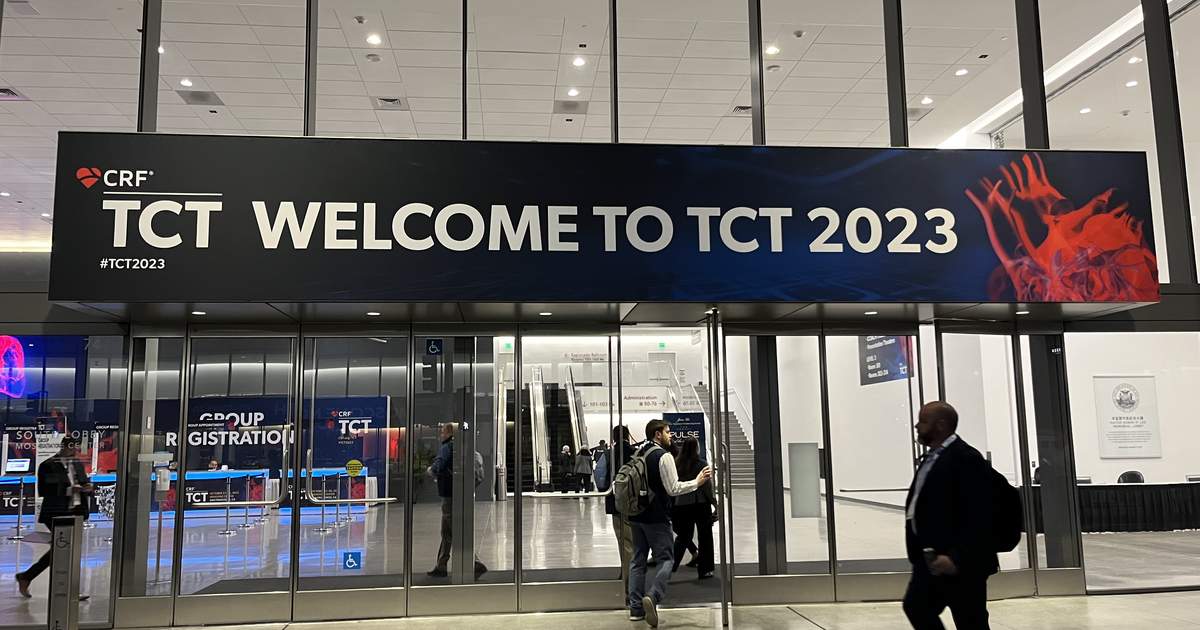Cardiovascular
PARTNER 3, Evolut and more: TAVR takes the spotlight in 4 late-breaking clinical trials at TCT 2023
Transcatheter aortic valve replacement (TAVR) has been one of the hottest topics in interventional cardiology for years now, and the large crowds at TCT 2023 in San Francisco suggest that will still be the case for many years to come.
The first four late-breaking clinical trials presented at the annual Transcatheter Cardiovascular Therapeutics conference all focused on ongoing developments in the world of TAVR. The presentations occurred Tuesday, Oct. 24, in front of a packed audience that was clearly anticipating the results of these studies.
PARTNER 3 trial
Martin B. Leon, MD, a longtime interventional cardiologist with Columbia University Department of Medicine and a founder of the Cardiovascular Research Foundation, kicked off the festivities with five-year data from the PARTNER 3 trial, which compared outcomes after TAVR with the Sapien 3 valve from Edwards Lifesciences and surgical aortic valve replacement (SAVR) among low-risk patients. His team’s findings were simultaneously published in the New England Journal of Medicine.[1]
The analysis included 1,000 low-risk patients randomized to either TAVR or SAVR. Five-year follow-up was achieved in 94.6% of TAVR patients and 88.3% of SAVR patients.
The study’s primary endpoint was the non-hierarchical composite of all-cause death, all stroke or rehospitalization. After one year, TAVR was associated with a statistically significant advantage over SAVR. After five years, TAVR was still associated with improved outcomes compared to SAVR, but the difference was no longer statistically significant.
All in all, the researchers concluded that both treatment options—TAVR and SAVR—were associated with “similar and low clinical event rates,” including cardiovascular death rates of approximately 1% per year, stroke rates of approximately 1% per year and cardiovascular rehospitalization rates of approximately 3% per year.
Meanwhile, new-onset atrial fibrillation (AFib) was more common after surgery, and mild paravalvular leak was more common after SAVR.
Leon’s team ultimately concluded that TAVR with a Sapien 3 valve was a “meaningful alternative” to surgery for low-risk patients with severe, symptomatic aortic stenosis.
“We can tell our patients who have low-risk aortic stenosis that, for these two therapies, by the end of five years, there is more than a 70% chance they will be alive and feeling well with either no or very mild symptoms,” Leon explained. “We can also tell them that, at the end of five years, there is a more than 85% chance with either therapy that they will be alive with what would be a durable heart valve.”
Several thought leaders in the structural heart space discussed the PARTNER 3 findings during a TCT press conference. Bernard Prendergast, DM, an interventional cardiologist with Cleveland Clinic London, was “excited” about the results and said people have been anticipating this update for quite some time.
“I think it’s a win for our field,” added Pinak B. Shah, MD, director of the cardiac cath lab at Brigham and Women’s Hospital.

